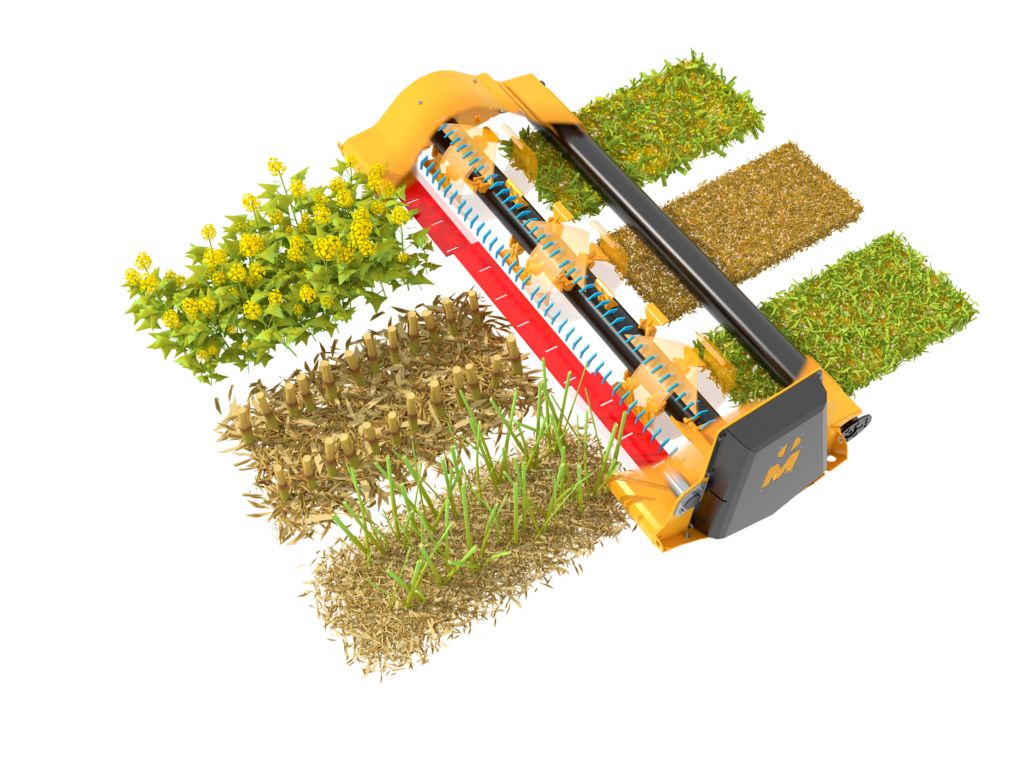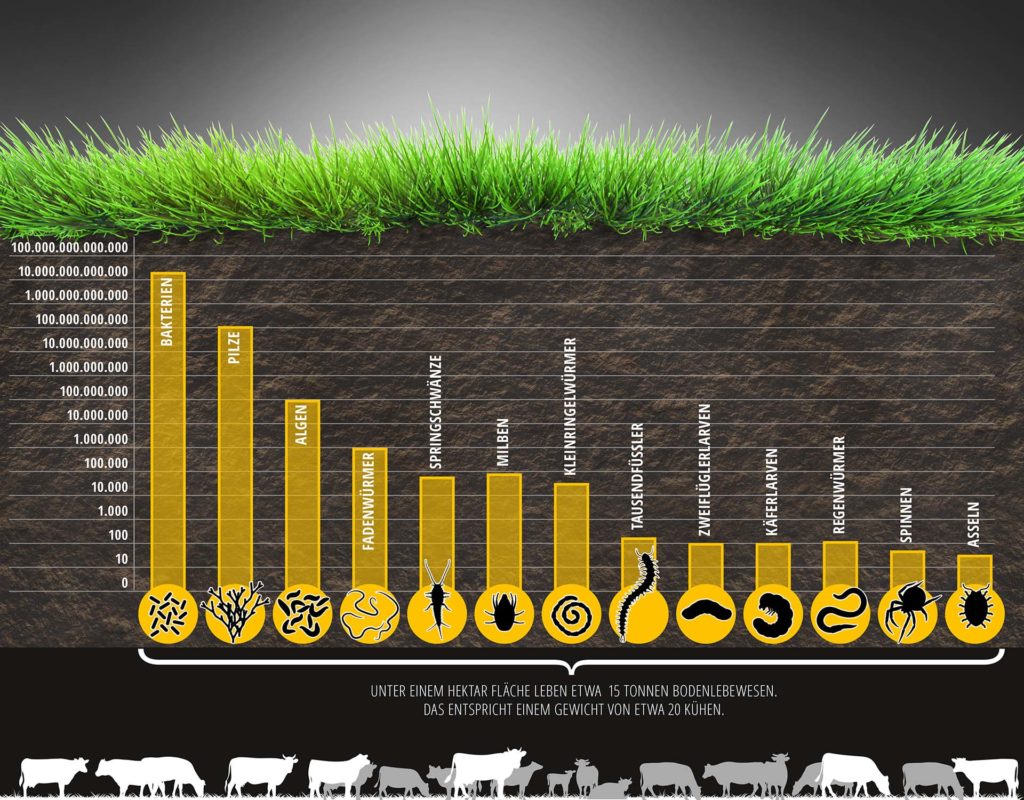Topics
(Soil) horizons: The fundamentals
General information on soilEarth = Soil
Components of the soil
Not all mulching is equal
Good reason
- Better organic cover
- Richer in humus
- Free fertiliser
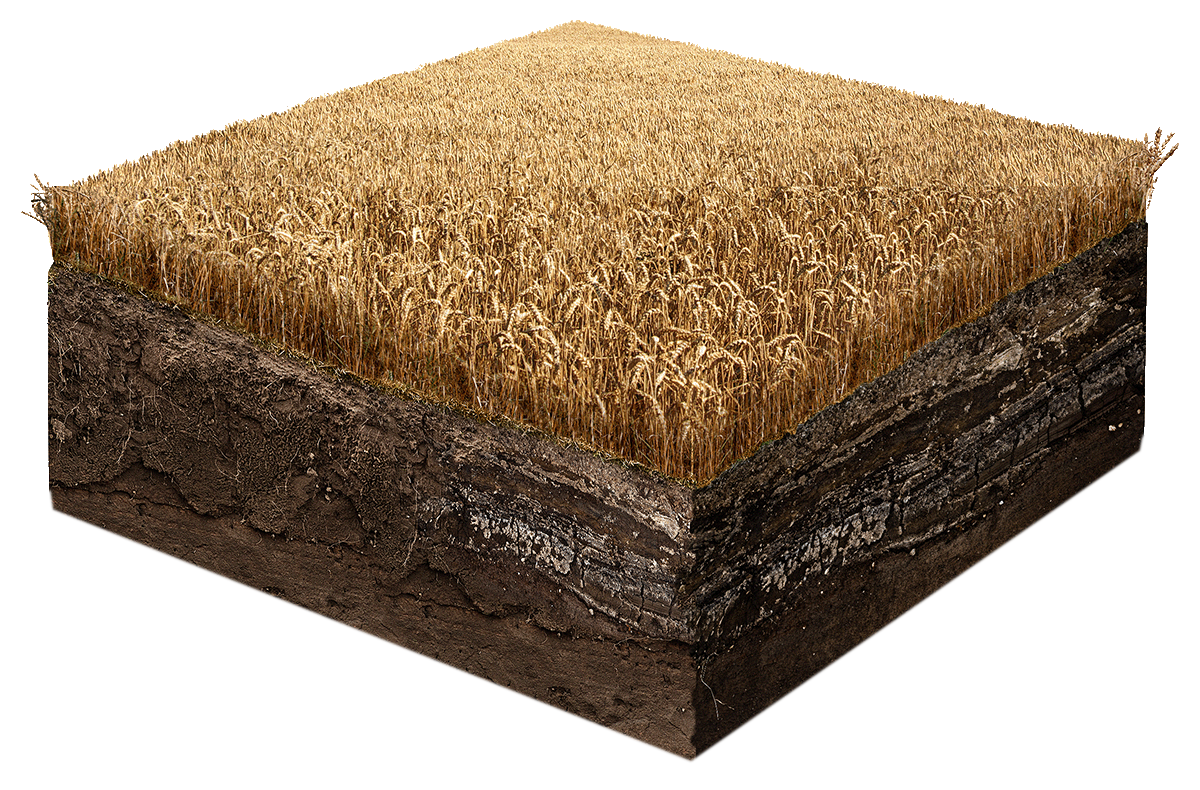
Information worth knowing about soil and humus
You stand on it, you walk on it, you lie on it. But hardly anyone thinks about what is actually going on under them. Except perhaps those who work with the soil. Unfortunately, even they often know too little about what is colloquially known as earth. Actually, by Mother Earth we mean our planet. But you could also mean the soil, considering how much life there is in it and how much life it supports on the surface.
The most important component of soil is humus, which is created by moisture and decomposed organic matter. Living organisms such as earthworms or larvae are also responsible for this decomposition. The more food these creatures get, the more humus is created. This promotes or even increases soil fertility. Mulching provides these living organisms in the soil with plenty of food and thus creates humus. Mulch is not a fertiliser, but it becomes one through the action of the organisms in the soil. Good for all organisms in the soil.
Earth = Soil
It takes 100 years to make 1 cm of soil.
The humus content can be roughly estimated on the basis of the soil colour. An exact determination of the organic substance is carried out analytically in the laboratory.
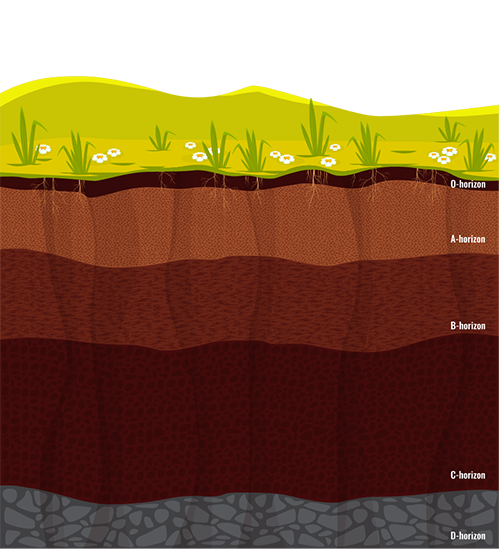
1.
From top to bottom
1. Humus
2. Topsoil
3. Subsoil
4. Disintegrated rocks
5. Bedrock
1. Not all soils are equal. It is amazing to see the variety of colours under the humus-rich topsoil. Soils consist of different layers, known as soil horizons. As the soil layers develop very differently depending on the initial situation, climate, rock type and passage of time, different ecosystems and soil types develop, which also fulfil different functions and tasks.
The humus content can be roughly estimated on the basis of the soil colour. An exact determination of the organic substance is carried out analytically in the laboratory.
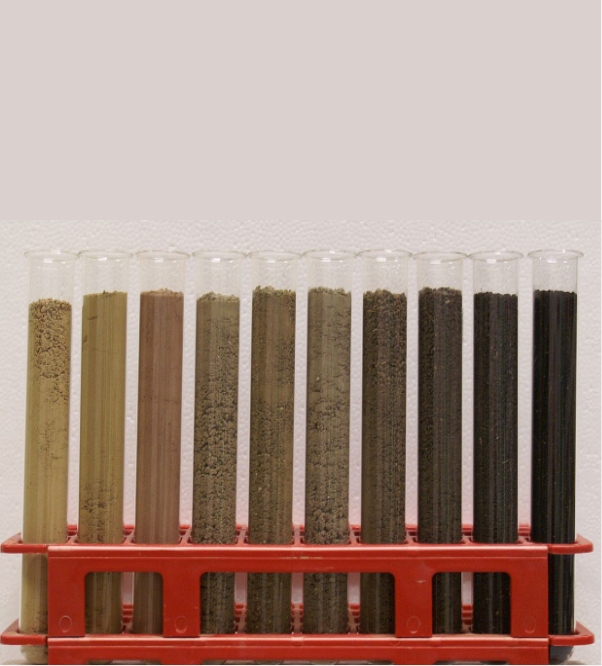
2.
The soil samples (from left to right) have the following humus content (in %):
1. Silty loam, 0.7 %
2. Silty loam 1.7 %
3. Sandy loam 3.1 %
4. Clayey loam 5.4 %
5. Clayey loam 6.5 %
6. Clayey loam 7.9 %
7. Clayey loam 9.9 %
8. Clayey loam 12.5 %
9. Sandy loam 21.4 %
10. Bog soil 84 %
1. Not all soils are equal. It is amazing to see the variety of colours under the humus-rich topsoil. Soils consist of different layers, known as soil horizons. As the soil layers develop very differently depending on the initial situation, climate, rock type and passage of time, different ecosystems and soil types develop, which also fulfil different functions and tasks.
2. The humus content of the soil varies greatly. It can be calculated from measured values for the organic carbon content of the soil by multiplying these values by a factor of 1.72 (factor 2 for peat and top layer humus). The humus content depends on the soil horizon, the plant cover, the climate, the soil moisture and the land use. The distribution of humus in the soil also varies greatly: In forest soils, the humus lies as a thick top layer above the mineral soil (top layer humus, raw humus).
In agriculturally utilised mineral soils, it is in turn closely mixed with the mineral content.
The content decreases rapidly from top to bottom: Around half of the total organic matter in arable soil is found in the topsoil, whereas in grassland soil it is found in the top 10 cm. Special cases are the deep, humus-rich soils, such as black earths, organic bog soils or alluvial topsoil material (colluvia). The average humus content of tilled mineral soils is 1.8 – 2.5 % in the topsoil, and 5 – 8 % on average in the top 10 cm of grassland soils. Higher humus contents are typical for clayey soils, moist to wet soils and soils in climates with high precipitation. Highly aerated, sandy soils have lower humus contents (1 – 2 %).
COMPONENTS OF THE SOIL
- Water 23 %
- Air 25 %
- Organic substances 7 %
- Dead organic substances 85 %
- Living roots 9 %
- Soil life (microorganisms) 6 %
- Mineral substances 45 %
- Quartz 38 %
- Mica 20 %
- Carbonates 12 %

Not all mulching is equal
Mulching is one of the most important measures for building up humus. As earthworms have no teeth, the material should be served to them in bite-sized portions. Thanks to the adjustable cutting bar and infinitely variable adjustment of the shredding rate, the Müthing Vario system can optimally shred the crop residues for earthworms and the like.
